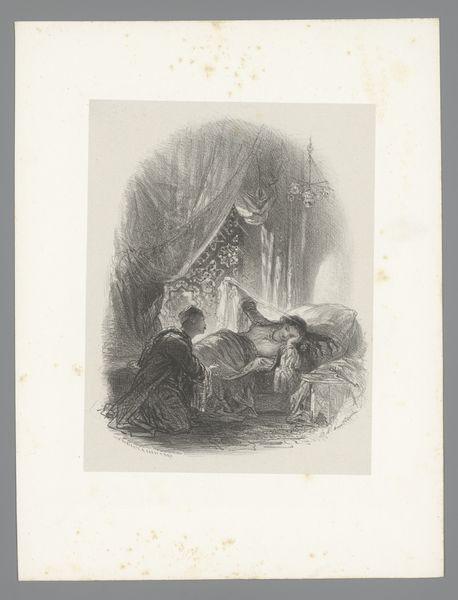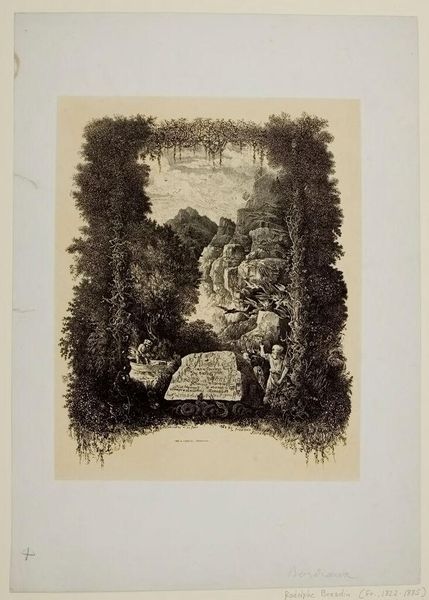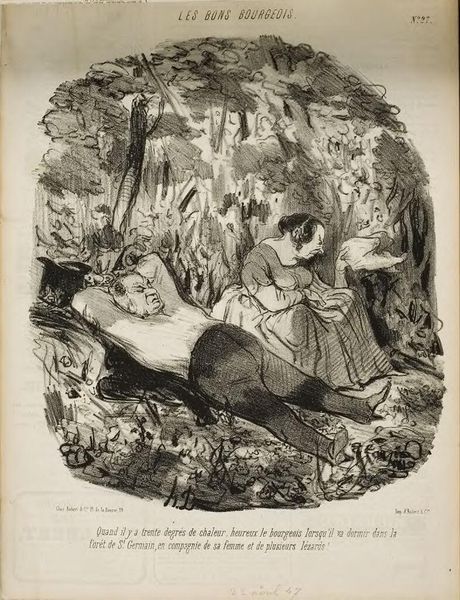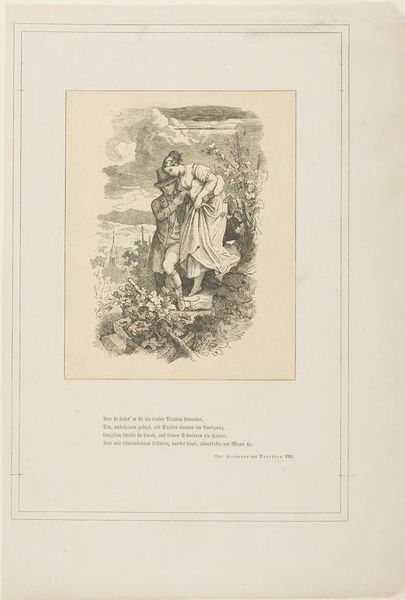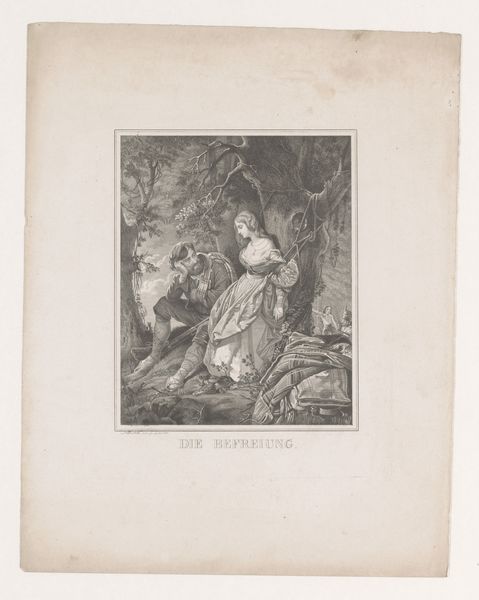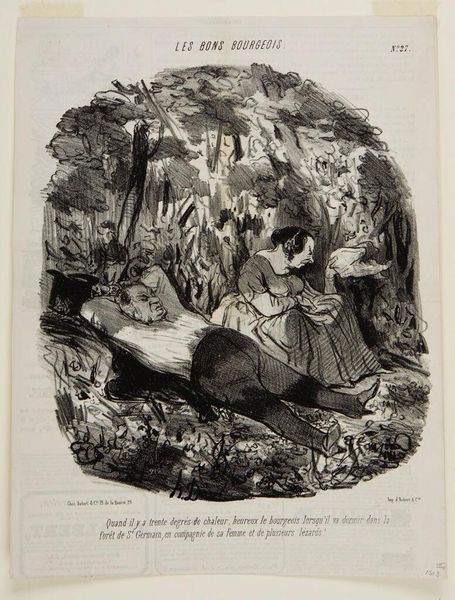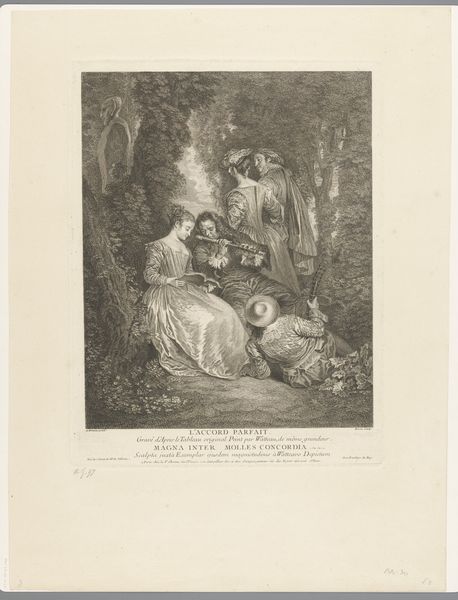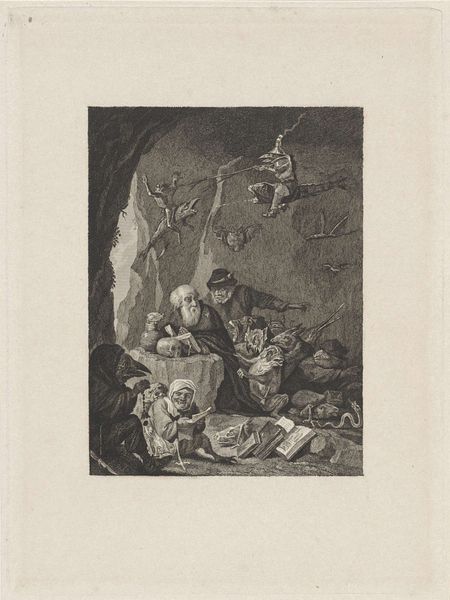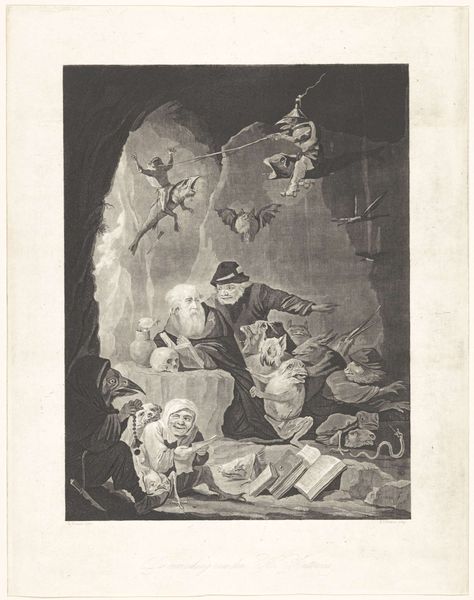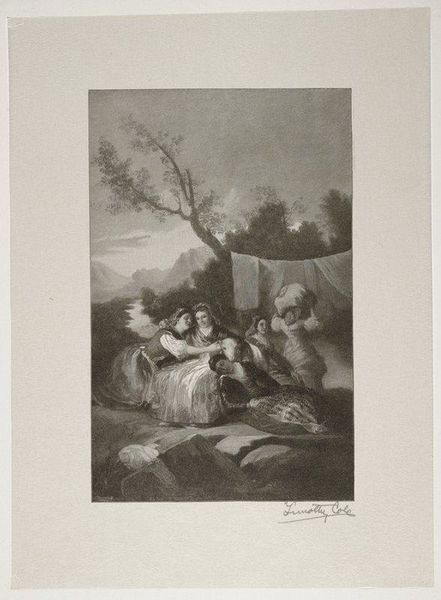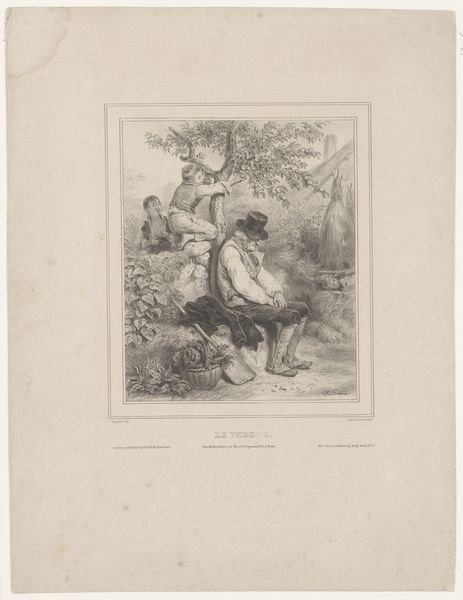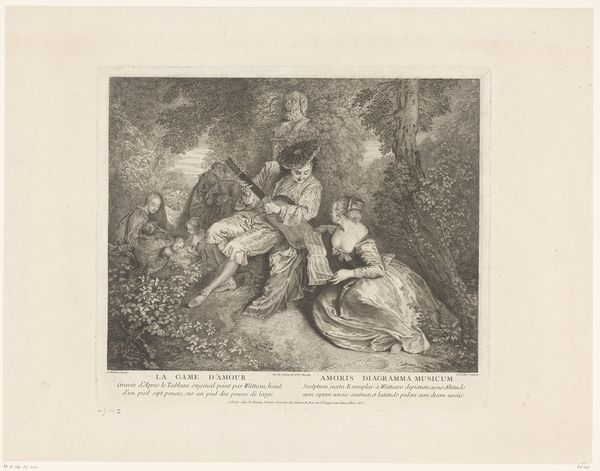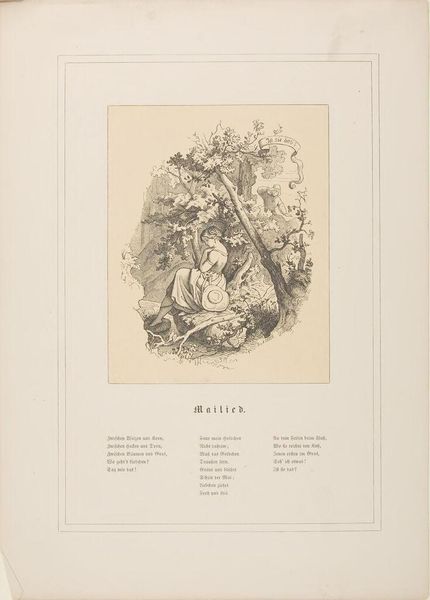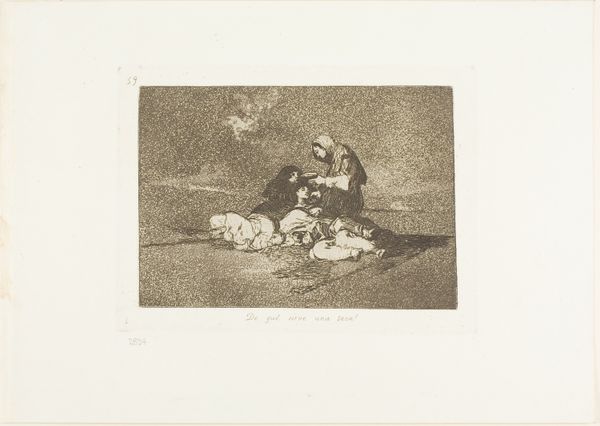
At 30°C, lucky he who can escape and snooze in the forest of Saint-Germain accompanied by his wife and a few lizards, plate 27 from Les Bons Bourgeois 1847
0:00
0:00
drawing, lithograph, print, paper
#
portrait
#
drawing
#
lithograph
# print
#
caricature
#
landscape
#
paper
#
romanticism
#
cityscape
#
genre-painting
#
history-painting
Dimensions: 260 × 226 mm (image); 356 × 277 mm (sheet)
Copyright: Public Domain
Curator: What a telling image! This is Honoré Daumier's lithograph, "At 30°C, lucky he who can escape and snooze in the forest of Saint-Germain accompanied by his wife and a few lizards," plate 27 from his series, Les Bons Bourgeois, created in 1847. Editor: It's instantly sweltering just looking at it. The way he renders the foliage, a dense and almost suffocating mass around the central figures, makes the heat palpable. Is it just me, or does that nap look utterly unrefreshing? Curator: The context is everything, isn't it? Daumier, throughout Les Bons Bourgeois, uses caricature to critique the burgeoning middle class of 19th-century France. This print isn't simply about escaping the heat; it’s about class, leisure, and societal expectations. Editor: So the lithographic process—a more accessible and reproducible medium than, say, oil painting—allows Daumier to broadly disseminate this satirical view of bourgeois relaxation. It highlights a shift in the consumption of leisure, doesn't it? Making it almost… industrial? Curator: Precisely! Note how he renders the forest floor. That messy thicket speaks volumes of their intrusion into this "natural" space. Are they seeking respite, or are they claiming ownership of it? The lizard reference is particularly telling. What’s he hinting at there? A shedding of skin, perhaps, a shedding of the societal restraints they try to uphold? Editor: And the wife seems equally trapped, though she's ostensibly "reading." Her hunched posture and concerned expression offer such a marked contrast with her husband's abandon. The raw materiality of the lithographic crayon, those deep blacks and sharp lines, reinforce this tension, practically carving the weariness into her face. It suggests that these leisurely pursuits are maybe not that enjoyable to her. Curator: Her apparent discomfort also brings forth issues of gender expectations. The woman is there almost as a marker of their status, and she's performing labour just by attending to appearances. Daumier subtly captures her confinement within those roles, wouldn't you say? Editor: Absolutely. Even the act of going to the forest has now become an activity they are performing. Daumier used this method to emphasize both the construction and consumption of class identity. Curator: It invites us to question not just the "bourgeois" pursuit of leisure but also how such activities are shaped by gender, class, and ultimately, the politics of everyday life. Editor: It's a striking work, definitely, that underscores how much we can learn about society through its art practices. The making and production of prints meant his message spread far and wide.
Comments
No comments
Be the first to comment and join the conversation on the ultimate creative platform.
